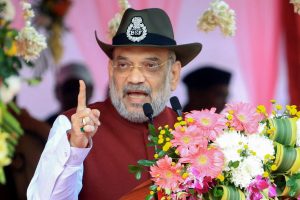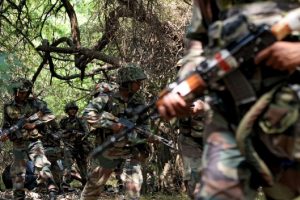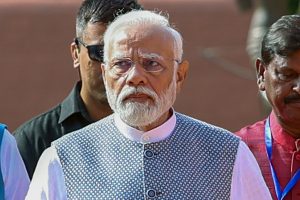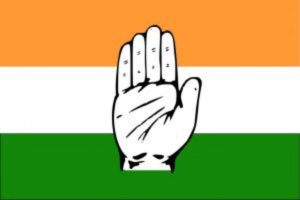Kurukshetra is where Lord Krishna sermonized the Bhagwad Gita to Arjuna, where several episodes of Mahabharata, culminating in the battle, took place and is a place that was visited by Lord Buddha and many Sikh gurus. Still, the place is outside the radar of tourists.
Why Kurukshetra?
Isn’t it the place where some war took place in the past? Are you going to visit a battle-field? What are you going to do? These were some of the questions thrown at me when I spoke of my plan to visit Kurukshetra, a historical town. Perhaps, this is anyone’s reaction if they come to know someone is visiting Kurukshetra as a tourist. Located in Haryana, just three hours’ drive from Delhi, Kurukshetra is a lesser-known pilgrimage town of India.
It’s a land of full of history and mythology, courtesy the historic battle of Mahabharata between the Pandavas and the Kauravas. Perhaps this was the reason the beautiful pilgrimage town is stereotyped just as a battle-ground. Contrary to this popular belief ~ that only a war took place here ~ Kurukshetra has many things to offer. It is the place where Lord Krishna sermonized the Bhagwad Gita to Arjuna, the birthplace of Hindu’s sacred scripture, the Bhagwad Gita. It is the land that witnessed various episodes of the Mahabharata. Here Brahma had once performed a ritual.
The place was not only popular with Hindu sects but others too. Lord Buddha and many Sikh gurus visited it and devotional centres like shrines, temples, gurudwaras and kunds are testament to this. Unlike other pilgrimage places in India, like Haridwar, Rishikesh, Mathura and Vrindavan, Kurukshetra has never been a priority for tourists or devotees. Even though it has everything that can attract tourists and pilgrims, yet it never received footfalls like its counterparts. Why so much apathy towards this place? Many experts and locals blame it on the state government which did not show much interest in developing it as a pilgrimage site. Their apathy is visible at the pilgrimage sites, which are in appalling condition and need major revamp.
Inside the history
It was an early morning Sunday when we started our journey to this holy town from Delhi, and like everyone, we too were ill-informed about it. The 160-km drive on NH1 just passed in the blink of an eye as we crossed flourishing fields and many roadside Punjabi dhabas.
The mystic city is older than history. According to spiritual books, King Kuru, the ancestor of the Pandavas and Kauravas chose this land, situated on the bank of the Saraswati to settle down. Therefore, it is named after him. The most interesting part of history is, they say, Lord Vishnu blessed King Kuru with two boons: the city would be always known as the Holy Land of Kurukshetra and whosoever would die here, would go to heaven.
Other than the battle of Mahabharata, the place has several reasons for fame. Historians claim that the famous Chinese scholar Hieun Tsang visited it and King Ashoka developed Kurukshetra into a centre for learning, attracting people from all over the country and the world. The region’s colourful history is enough to intrigue everyone to visit the city. After our two-day stay in the town, it seemed we relived the bygone era of Mahabharata.
Each and every corner of the Kurukshethra and its surroundings has some Mahabharata connection. It has a temple and kund (pool of holy water) but no monuments. Sadly, barring a few, most of these places are in a dilapidated state. Brahma Sarovar is the best maintained and most visited destination in Kurukshetra. It is also a site for the annual grand Geeta festival (Geeta Jayanti).
People from far come here to take a dip in the lake as it is believed that one who bathes here is bestowed with the fruits of performing the Ashvamedha Yajna. The place is full of pictures and tales of Mahabharata and there is a big bronze statue of Krishna and Arjuna. It also houses temples. But the best time to visit it is during Gita Jayanti when it is decorated by lamps that pilgrims set afloat in the water body.
On the first day of the battle, Arjuna was a little hesitant to fight with his dear ones. Then it was Lord Krishna who enlightened him and convinced him that it was a “Dharma Yudh”. He recited the lesson of Geeta to him and this is how the scripture came into being. The place where Krishna sermonised Arjuna is called Jyotisar and is located in the middle of Kurukshetra. It is just an open area with a few trees and a small water body. Though it is clean, the place is not well-maintained as it should have been. People come here to perform various rituals and pujas.
When the deadly battle was going on, Bhishma, the grand figure in the Mahabharata, was felled by Arjuna’s arrows. Later, when the Kauravas and Pandavas went to pay homage to him, he said he felt thirsty. Then Arjuna shot an arrow into the earth, from where water came out and become a kund (pool). The place is called Bhisma Kund, located in Narkatari village of Kurukshetra. Today, there is a temple along with the kund. Locals believe that those who take a dip here are cleansed of all their sins.
Then, there is the Bhadrakali Temple, dedicated to Goddess Kali. It is said to have been built by the Pandavas. Made up of red sandstone, the temple has all the incarnations of the goddess inside it. Once the war was over, the Pandavas, along with Lord Krishna, came here to worship and offered horses for her service. Since then, devotees offer horses to the deity but now they are in metal or terracotta.
The Arunai Temple at Kurukshetra is believed to have been built by the sages Vishwamitra and Vashishta, dedicated to their guru. Then in Ami village, a few kilometers away from Kurukshetra is said to be the place where Arjuna’s son, Abhimanyu, was trapped in a Chakravyuha. Called Abhimanyukhera, the site is in the shape of mound.
Why not so popular?
All these sound very fascinating, but many of these sites are in a disarray. Either they are not well-maintained or cleaned, or in a sorry state. Locals cite various reasons but mainly blame it on the government. “Kurukshetra is a hidden gem, which is yet to be explored. Once the government starts paying attention, it would fetch tourists from all over the world. It is a land of Krishna and many other gods,” said Roop Chaudhary, who owns Noor Mahal in Karnal, the only five-star property in the area.
Vijay, a resident of Kurukshetra, informed that the place lacked basic facilities and this is the reason tourists stay away from this place. “It has everything to attract not only pilgrims but also tourists. But we are not able to do it even though it is driving distance from Delhi and Chandigarh alike. See how Mathura and Vrindavan have grown and we are very far behind them. The reason being Kurukshetra has never being promoted and the city lacks basic facilities. You won’t find a decent hotel in the city, forget about the rest,” shrugged Vijay.
Randhir, who has to travel frequently to the city for work, however, shared that for the past few years, the city has improved a lot. “Thanks to the current government, the place has seen some facelift. Now it has come into the radar of tourists. Ever since Geeta Mahotsav was celebrated in Kurukshetra, it has gained many footfalls. I think, Kurukshetra deserves to be promoted like this,” he asserted. “A few years back, many of these sites were in a sorry state. You could not even reach Jyotisar, the birthplace of Geeta, without becoming dusty and asking directions from a number of people. Once you reached the place, you would have found nothing more there than a few trees and a pond.”











